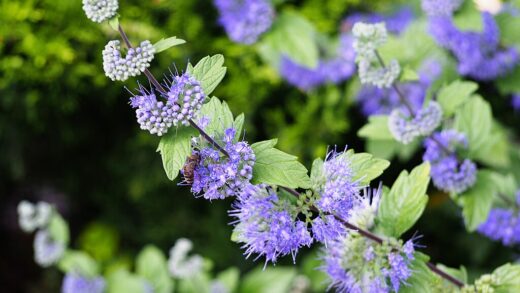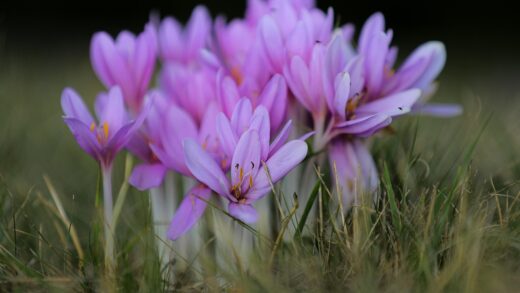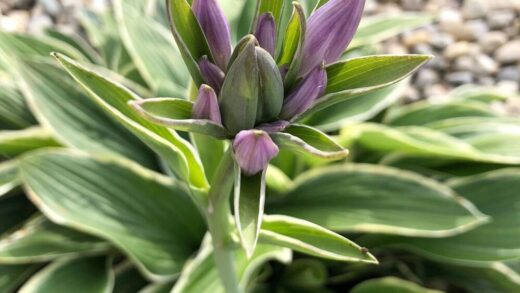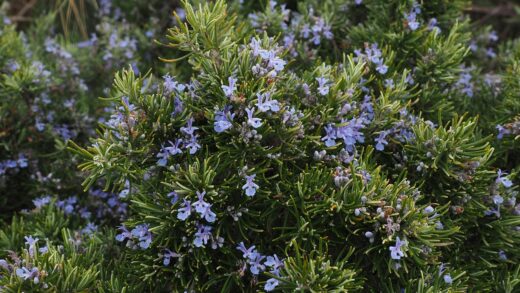The tulip, this splendid bulbous perennial plant of spring, has been one of the most beloved and iconic flowers in gardens for centuries. Originally from the region of the Persian Empire and modern-day Turkey, where it grew wild on the mountainous steppes, its cultivation began as early as the 10th century. In the Ottoman Empire, it was held in special esteem, adorning the gardens of sultans and frequently appearing in the arts as a symbol of abundance and power. It reached Europe in the mid-16th century, where it quickly gained enormous popularity, especially in the Netherlands, sparking an unprecedented economic and cultural phenomenon.
The arrival of the tulip in Europe led to the famous “Tulip Mania” in the Netherlands in the early 17th century, one of history’s first recorded speculative economic bubbles. During this period, the price of a single bulb of a rare, specially coloured tulip variety could exceed the price of a house in Amsterdam, with fortunes changing hands overnight. Although the bubble spectacularly burst in 1637, the love and appreciation for the tulip remained, becoming deeply embedded in Dutch and European culture. In the arts, particularly in still life painting, the tulip became a symbol of the transience of life and beauty.
From a botanical perspective, the tulip belongs to the genus Tulipa and the lily family (Liliaceae), which includes over one hundred wild species and thousands of cultivated hybrids. This vast genetic diversity allows for an astonishing variety of forms, colours, and blooming times, from the classic cup-shaped flowers to the extravagant appearance of fringed or parrot tulips. Breeders are continually working to create new, even more beautiful, resistant, and durable varieties, ensuring the tulip’s enduring popularity. This wealth of varieties allows every garden enthusiast to find a version that suits their own taste and garden.
Today, the tulip is an essential feature of spring gardens worldwide, heralding the arrival of spring with an explosion of colour after the long, grey winter. It is used versatilely in modern garden design, from large, single-coloured beds to natural-looking clumps planted in mixed perennial borders. Its use as a cut flower is also outstanding, as it is one of the most important components of spring bouquets. The global appeal and economic importance of the tulip remain immense today, accounting for a significant portion of the Dutch flower auction’s turnover each year.
Selecting the right tulip variety
Navigating the world of tulips is made much easier by familiarizing oneself with the main categories, which are primarily distinguished by flowering time and flower shape. According to the simplest classification, there are early, mid-season, and late-flowering varieties, the conscious combination of which can provide a continuous tulip display for up to six weeks in the garden. Key groups include, for example, Fosteriana, Kaufmanniana, Greigii, Triumph, Darwin Hybrid, Lily-flowered, Fringed, Viridiflora (green-flowered), and Parrot tulips. Knowledge of these groups is crucial for designing a harmonious and long-lasting flower bed.
Triumph tulips form the largest and most popular group, created from crosses between early and late-flowering varieties. They are characterized by extremely strong, sturdy stems that hold up well against spring wind and rain, and a classic, conical flower shape that opens wide in the sun. Their colour range is almost inexhaustible, with every shade from pure white to deep purple and almost black, including bicoloured and flamed versions. Due to their reliability and versatility, they are excellently suited for flower beds, borders, and as cut flowers.
Darwin Hybrids are famous for their impressive size and vibrant colours; their flowers are among the largest of all tulips. They produce huge, pyramidal flower heads on tall, strong stems that open in the mid-to-late spring. A particularly good quality is that, unlike most tulip varieties, they tend to behave as perennials, meaning that under the right conditions, they will re-emerge and bloom profusely year after year. In contrast, Lily-flowered tulips captivate with their elegance: their slender, pointed, outward-curving petals give them a unique, graceful appearance, making them an ideal choice for more refined garden areas.
More unusual varieties, such as Fringed, Parrot, or Viridiflora tulips, can be true jewels in any garden. The edges of Fringed tulip petals are adorned with fine, ice-crystal-like fringes, giving the flower a unique texture. Parrot tulips, with their huge, ruffled, twisted, and often multi-coloured petals, create an exotic, dramatic effect. The hallmark of the Viridiflora group is the appearance of green stripes or flames on the petals, resulting in an exceptionally long-lasting bloom and a special visual appeal. When choosing these varieties, it is worth considering that their extravagant appearance makes them best suited as focal points in smaller groups.
The ideal planting location and soil preparation
One of the most important conditions for the successful cultivation of tulips is ensuring adequate light conditions. These plants are decidedly light-demanding; at least six hours of direct sunlight per day are essential for abundant flowering and the development of strong, healthy stems. In shady or semi-shady locations, tulips can become leggy, their stems weaken, and the colour of the flowers may become paler, or flowering may even fail to occur at all. The most ideal location is therefore a south or west-facing, open area where the spring sun’s rays can reach the plants unimpeded.
Another crucial point is the soil’s drainage capacity, as tulip bulbs are extremely sensitive to standing water. In overly wet, compacted soil, the bulbs can easily start to rot, leading to the plant’s demise. The ideal is a well-structured, loose, sandy loam soil that ensures the rapid drainage of excess water while being able to retain the necessary moisture for growth. Before planting, it is worth conducting a simple test: dig a hole about 30 centimetres deep, fill it with water, and observe how long it takes to drain. If the water disappears within an hour, the area is suitable.
Improving non-ideal soils is essential for success and must be done before planting. Heavy clay soils can be loosened and their drainage improved by adding large amounts of organic matter, such as mature compost, well-rotted manure, and sand or fine gravel. For overly loose, sandy soils, compost and other organic matter help to increase their water and nutrient retention capacity. The soil should be dug up to a depth of at least 30-40 centimetres and thoroughly mixed with the amendments.
Soil pH and nutrient content also affect the development of tulips. Most tulips prefer slightly acidic to neutral soil, ideally with a pH between 6.0 and 7.0. A soil test can help determine the exact pH, which can be corrected with lime (if too acidic) or peat moss (if too alkaline) if necessary. At planting time, it is advisable to sprinkle a little bone meal or a fertilizer specifically for bulbous plants, low in nitrogen and high in phosphorus and potassium, under the bulbs. High-nitrogen fertilizers should be avoided as they stimulate excessive foliage growth at the expense of flowering and bulb development.
The tricks of planting tulip bulbs
The timing of planting is crucial in the life cycle of tulips. The bulbs should be placed in the ground in autumn when the soil temperature consistently drops below 13-15 degrees Celsius, but before the onset of severe frosts. In Hungary, this period typically lasts from late September to mid-November. This timing is essential because it gives the bulbs enough time to develop a root system before winter sets in, which is vital for vigorous growth in the spring. Planting too early in warm soil can cause diseases and encourage premature sprouting, while planting too late does not leave enough time for rooting.
Planting depth is also a determining factor that affects the plant’s stability and perennial ability. The general rule of thumb is to plant the bulb two to three times as deep as its height, measured from the soil surface to the base of the bulb. For an average-sized bulb of 5 centimetres in height, this means a planting depth of 10-15 centimetres. Deeper planting has several advantages: it protects the bulb from winter frosts and summer heat, provides more stable support for the stem, and in some varieties, it prevents the bulb from splitting into small daughter bulbs, thereby promoting year-after-year flowering.
The arrangement and spacing of the bulbs largely depend on the desired aesthetic effect. In formal, geometric flower beds, the bulbs should be placed about 10-15 centimetres apart in a regular pattern. To achieve a more natural, woodland-like effect, plant them in irregular groups of at least 5-7 bulbs each, leaving only a few centimetres between the bulbs. When planting, always ensure that the pointed end of the bulb faces upwards. Although the tulip will in most cases find its way to the surface even if accidentally planted upside down, this costs the plant unnecessary energy.
The planting process itself is simple but requires some care. After preparing the soil, dig holes or a continuous trench to the appropriate depth. You can sprinkle a little sand at the bottom of the hole to improve drainage, as well as the aforementioned bone meal or slow-release fertilizer. Place the bulbs at the correct distance, then carefully cover them with the excavated soil, making sure there are no air pockets in the soil. Finally, gently firm the soil above the bulbs and water the area thoroughly to settle the soil around the bulbs and initiate the rooting process.
Caring for tulips during the growing season
The water requirements of tulips vary during the growing season, but in most cases, natural precipitation is sufficient for them, especially during the cool spring weather. After the thorough watering at planting, no further irrigation is usually needed in winter. However, in spring, from the emergence of the shoots until the end of flowering, the soil moisture content should be monitored, especially during longer, dry, rainless periods. If the top few centimetres of soil dry out, it is worth watering the plants thoroughly and deeply so that the water reaches the root zone. Overwatering, however, should be avoided at all costs due to the risk of bulb rot.
As for nutrient supply, if the soil was properly prepared at planting and slow-release nutrients were added, tulips generally do not need additional fertilization during the growing season. Excessive nutrient intake, especially high nitrogen content, can be more harmful than beneficial. If your soil is particularly poor, or the plants appear weak and stunted, you can give them a balanced, low-nitrogen liquid fertilizer when the foliage appears. Another option is to spread a thin layer of compost on the surface of the bed in early spring, before the shoots emerge.
Mulching is a useful technique in the care of tulip beds, although its timing differs from that of most perennial plants. The mulch (such as pine bark, straw, or leaf compost) should be spread in a 5-7 centimetre layer not in autumn, but after the onset of winter, once the soil has frozen. This layer acts as an insulator, protecting the bulbs from sudden temperature fluctuations and soil heaving caused by hard frosts. In spring, the mulch helps to retain soil moisture and suppress weed growth, which means less maintenance work.
Tall, large-flowered varieties, such as Darwin Hybrids or Parrot tulips, may require extra support in windy, exposed locations to prevent their stems from breaking under the weight of the flower or a strong gust of wind. Staking should be done discreetly, using thin bamboo stakes or special plant supports inserted next to the plant and securing the stem with a loose tie. However, the best prevention is to choose the right variety and provide a sheltered planting location. Triumph or Greigii tulips, for example, with their shorter, stronger stems, are more resistant to the vagaries of the weather.
Post-flowering care: the secret to next year’s bounty
Once flowering is over, one of the most important tasks is to remove the spent flower heads, a process known as deadheading. This operation is necessary because after the flower withers, the plant begins to expend energy on ripening seeds, which unnecessarily depletes the resources stored in the bulb. If you pinch or cut off the withered flower along with the top of the stem, the plant can direct all its energy towards nourishing the bulb and storing the nutrients needed for the next year’s flowering. It is important to remove only the flower head and the small stem part directly below it, leaving the entire stem and leaves intact.
In the period after flowering, the foliage plays a critical role in the tulip’s life cycle, so it is essential to leave the leaves on the plant until they have completely yellowed and withered. The green leaves produce energy through photosynthesis, which the plant transports back to the bulb, recharging it for the next season. Prematurely cutting, mowing, or even fashionably braiding the leaves prevents this process and significantly weakens the bulb, which can result in smaller flowers or a complete lack of flowering the following year. Patiently wait for the foliage to die back naturally; at that point, it can be easily removed.
During the approximately six-week period until the foliage dies back, the plant’s care should continue. In dry weather, continue to provide moderate watering to keep the leaves active for as long as possible and to ensure undisturbed bulb development. This is also the time when a final treatment with a potassium-rich liquid fertilizer can benefit the bulb, promoting winter hardiness and the formation of next year’s flower buds. Once the foliage has completely yellowed, stop watering so that the bulb can enter its summer dormancy period in a dry medium.
Lifting and storing tulip bulbs in the summer is a recommended practice for most modern hybrids, as these varieties often flower most beautifully only in the first year and tend to weaken or split into smaller bulbs if left in the ground. The bulbs should be lifted when the foliage has completely withered. Carefully lift them from the ground with a spade, clean off the soil, and then let them dry for a few weeks in a ventilated, shady place. After that, remove the dead roots and the remains of the old bulb, and store the healthy bulbs in a mesh bag or cardboard box in a cool, dark, dry, and well-ventilated place (such as a garage or cellar) until autumn planting.
Diseases and pests threatening tulips
The most serious and common fungal disease of tulips is Tulip Fire, caused by the pathogen Botrytis tulipae. The symptoms of the infection are small, watery spots on the leaves and petals, which later turn brown, dry out, and cause the plant parts to become distorted and rot. In severe cases, the plant may not even be able to sprout, or the young shoots rot just above the ground. The key to prevention is good air circulation provided by proper spacing, avoiding overwatering, and the immediate removal and destruction of infected plant parts and fallen leaves. To prevent the disease, only healthy, certified bulbs should be planted.
Various root and bulb rot fungi, such as Pythium or Fusarium, can also be a serious problem, especially in poorly drained, compacted soils. Signs of infection include weak, yellowing shoots in spring, stunted growth, and soft, mushy, foul-smelling rot visible when the bulbs are dug up. The basis of control here is also prevention: improving soil structure, avoiding standing water, and refraining from overwatering. Pre-planting bulb selection is also important; do not plant damaged, soft, or mouldy bulbs.
Tulips can also be attacked by numerous pests during the growing season. Aphids are fond of sucking on young shoots and buds, causing distortion and attracting ants with their honeydew secretions. Slugs and snails chew on the leaves and flower petals at night, leaving ugly holes and slimy trails behind. Underground, the bulbs can be damaged by the bulb scale mite, and during storage by the bulb mite. Control depends on the pest and can range from removing infected parts to using insecticidal soaps or setting up special slug traps.
Larger animals such as voles, mice, squirrels, and deer can also cause serious damage to tulip plantings. Rodents are fond of digging up and consuming the nutrient-rich tulip bulbs, especially during the winter. Deer and rabbits, in turn, graze on the fresh shoots and flowers in the spring. There are several ways to defend against them: the bulbs can be planted in wire baskets, animal repellents can be used, or plants that wildlife dislikes, such as daffodils, crown imperials, or ornamental onions, can be interplanted with the tulips.


















